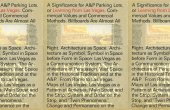The Computer Misfits: The Rise and Fall of the Pioneering Laboratory for Computer Graphics
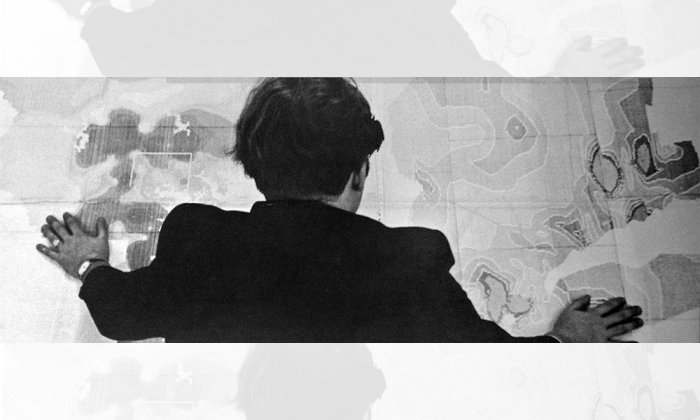
In the decades after World War II, new forms of learning transformed architectural education. These radical experiments — explored in the new volume “Radical Pedagogies” — sought to upend disciplinary foundations and conventional assumptions about the nature of architecture as much as they challenged modernist and colonial norms, decentered building, imagined new roles for the architect, and envisioned participatory forms of practice. Although many of the experimental programs were subsequently abandoned, terminated, or assimilated, they nevertheless helped shape and in some sense define architectural discourse and practice. In the excerpt from “Radical Pedagogies” that follows, architectural historian Evangelos Kotsioris looks at Harvard’s now-defunct Laboratory for Computer Graphics (and Spatial Analysis), one of the most historically significant experiments in computing.
The Laboratory for Computer Graphics (LCG) was proposed in 1964, and officially established a year later, as part of the Graduate School of Design (GSD) at Harvard University. Initially affiliated with the school’s department of Regional and City Planning, the so-called “Harvard lab” was founded by architect and mathematical cartographer Howard T. Fisher with the active support of Dean Josep Lluís Sert as an experimental venue for the use of computers in the automated creation of thematic maps — essentially maps that used lines, shapes, and symbols to visually communicate measurable data. During its 26-year lifespan, the LCG was, according to the lab’s newsletter, an epicenter for the development of “systems for the analysis and graphic representation of spatial factors in man’s physical and social environment.” These included new software on mapping and cartography developed by faculty and students, including SYMAP and ODYSSEY, two of the programs that would ultimately contribute to the development of GIS (graphic information systems). Often overshadowed by the technical advances it made possible, the lab was also a significant educational experiment, training one of the first generations of designers in computers and new media.
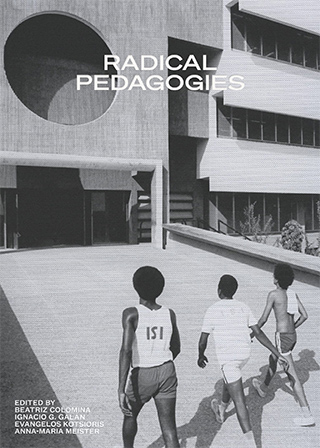
The LCG was a true product of the 1960s, a decade in which the problems faced by American cities — including urban decay, inner-city poverty, and racial segregation — became fundable research topics for Ivy League design schools. The formation of the lab was only made possible by an initial grant of $249,000 from the Ford Foundation. Louis Winnick, an economist and former director of research of the New York City Planning Commission, who handled the Foundation’s investments in housing and community development, had supported Fisher’s proposal to make computer mapping accessible to large numbers of practicing planners. The LCG came at the heels of the Harvard–MIT Joint Center for Housing Studies, which had been established in 1959, and preceded the founding of the Urban Systems Laboratory (USL) at MIT in 1968.
Like the LCG, these other Cambridge-based “labs” had been proposed as interdepartmental, multidisciplinary entities dedicated to the study of urban issues. Most importantly, both had received substantial financial support from the Ford Foundation, during a period in which the self-proclaimed “private, nonprofit institution whose purpose is to serve the public welfare” was accused of also indirectly supporting the Cold War (cultural) “development” agenda of the CIA.
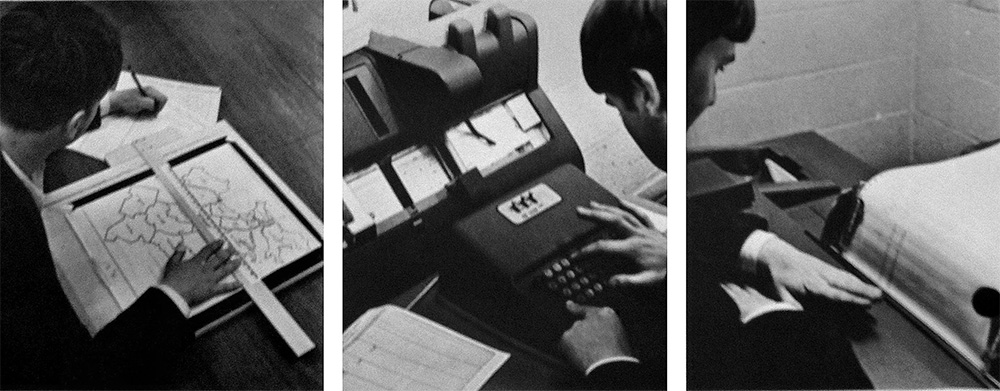
From its inception, the LCG was an interdisciplinary endeavor. Its diverse cast of members comprised architects, geographers, cartographers, mathematicians, computer scientists, and artists invested in the idea that the introduction of the computer could profoundly alter the ways in which the design disciplines operated in both education and practice. The lab’s first courses focused solely on the creation of maps through the use of SYMAP (short for “SYnagraphic computer MAPping”), the computer program that Fisher had started developing at Northwestern University before getting hired by Harvard.
In the mid-1960s this involved manually keypunching data on cards, taking them to the Harvard Computer Center for processing, and picking up the printed results hours, if not days, later. While the lab’s early courses on the theory and application of computer graphics initially attracted mainly planning students, the involvement of Carl Steinitz (at the time assistant professor in city planning and landscape) as a research associate in 1966 started to pique the interest of landscape and other students. After Fisher’s retirement in 1968, the scope and research directives of the LCG gradually broadened to include architectural representation and design, prompting the lab’s new director, professor of theoretical geography and regional planning William Warntz, to append the words “and Spatial Analysis” to the lab’s name (LCGSA).
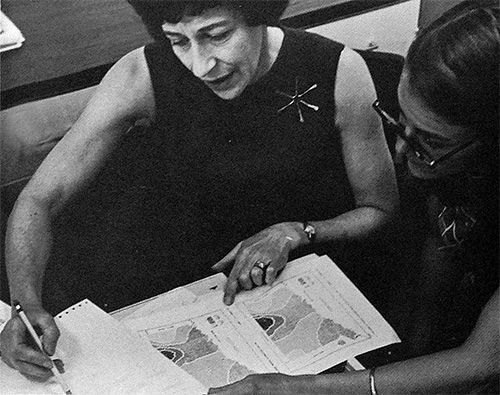
Special Collections, Loeb Library, Harvard Graduate School of Design.
Some of the most groundbreaking courses taught at the LCGSA were initiated by Eric Teicholz, a young GSD-trained architect and fellow of the Harvard Computing Center supported by a donation from IBM. As a joint fellow at the LCGSA in 1967, Teicholz developed OTOTROL, one of the first computer programs capable of producing three-dimensional perspective drawings. Through a series of experimental workshops and seminars in computer-aided design (CAD), he aimed to reposition the use of the computer — previously confined to the periphery of the architectural profession (essentially engineering, contracting, and cartography) — at the very center of the design process. Convinced of the potential of the new media as both objects and tools of the architect’s education, Teicholz encouraged the use of videotape recording and all means of “photomation,” including television, still photography, moving picture photography, lasers, and holography. Long before the formation of the Media Lab at MIT, and other similar research enclaves across U.S. universities, the LCGSA reimagined design as a digital, multimedia endeavor.
By the early 1970s, however, the LCGSA needed to find new sources of funding. Little remained of the initial Ford Foundation grant that had made it palatable to Harvard, or of the large fund secured from the National Science Foundation soon after. Under yet another executive director, the chemist-turned-geographer Allan H. Schmidt, the LCGSA turned to software sales to external parties and continuing education workshops for design professionals, both for a steep fee.
While seemingly objective, the maps produced by the LCGSA were loaded with the politics implicit in data selection and visualization.
What became increasingly evident, much to the dismay of GSD’s new dean, Maurice D. Kilbridge, was that the LCGSA often relied for its funding on big governmental and institutional sponsors, such as the Defense Intelligence Agency, the Office of Naval Research, the National Air Pollution Administration, the Federal Housing Administration, and the Office of Planning and Coordination of the State of New York. Since its formation, the Harvard lab had solicited contracts from agencies involved with controversial issues of urban and territorial management, including the mapping of low-income populations in major urban centers like New York, daytime/nighttime activities and their intensities in urban settings, racial imbalance in public schools, the use of computers in the processing of mortgage insurance applications, air pollution studies, planning studies for hospitals, welfare facilities, shopping centers, and highways, as well as studies for minimizing overland sonic booms, among others. For many of the lab’s faculty, the opportunity to work on “real-life,” if contentious, projects such as these constituted the most meaningful training students could receive.
During the same period, a series of mapping commissions for high-circulation newspapers and magazines provided much-needed income for the lab’s operation while at the same time communicating its capabilities to a wider audience. In 1972 the LCGSA produced a three-dimensional map charting population growth for a Life magazine article on rising U.S. birth rates and Nixon’s attacks on the legalization of abortion. The year after, in 1973, The New York Times ordered a series of maps to accompany an article by Paul Delaney that portrayed the “geographical movement of black Americans from 1960 and 1970” — the tail end of the so-called Second Great Migration, when an estimated 1,380,000 African Americans left the South in search of jobs and new opportunities in the industrial centers of the northeastern and western parts of the U.S. Three years later, on the occasion of its thematic issue on the U.S. bicentennial in 1976, National Geographic commissioned the lab to produce a series of maps depicting the “vast population shifts” in North America since 1790 — essentially representing the result of European settler colonization and the westward expansion of the 19th century.
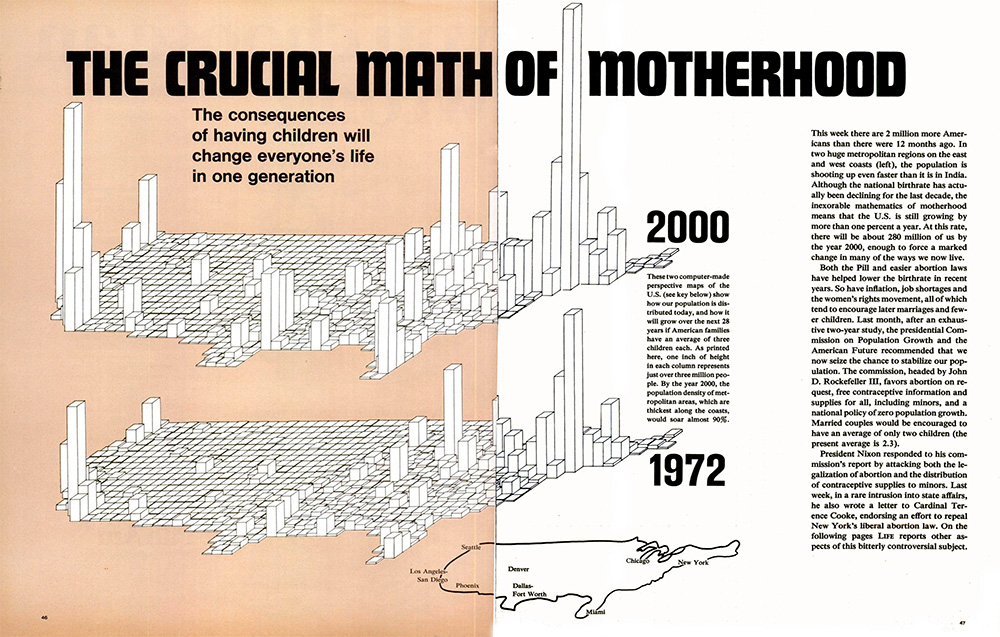
While seemingly objective, the maps produced by the LCGSA were loaded with the politics implicit in data selection and visualization. While such commissions raised its profile, Kilbridge feared that the LCGSA risked becoming a freelancing operation that used the resources of Harvard primarily to service the agendas of governmental agencies, private institutions, or even popular publications, rather than catering for the educational needs of GSD students.
After the antiwar student demonstrations that shook Cambridge between 1967 and 1972, especially the so-called “November Actions” of 1969, when MIT students protested against the complicity of the Ivy League institution in defense-related research, labs like the LCGSA came under a new level of scrutiny. Although it had moved from its former location in the basement of Harvard’s Memorial Hall to the GSD’s newly completed Gund Hall in 1972, the LCGSA continued to give the impression of a semiautonomous appendage to the school. As a result, in early 1974, Kilbridge appointed a committee to probe the nature of these working relationships and evaluate the LCGSA’s educational contribution to the GSD. Among the eight members of the committee that would debate the lab’s fate was architect Nicholas Negroponte, co-founder of the Architecture Machine Group at MIT, which competed for funding from some of the very same sources as the Harvard lab. The committee’s reproachful conclusion was that the LCGSA was “not central to the operations of the GSD or any department” and that its “focus has been too narrow,” essentially leaving out newer strands of research, including the potential use of artificial intelligence and robotics in design.

Largely through Fisher’s intervention, the LCGSA was spared on the condition that the lab moved away from commercial software development and recentered its activities on its educational mission. In the years that followed, the LCGSA’s faculty and students produced some of its most pioneering research on computer graphics and real-time CAD, allowing users to actively shape and manipulate designs on a computer screen, rather than having to go through the cumbersome and time-consuming process of punching and processing data before printing out. Yet the lab’s largely technocratic approach and the fittingness of its activity within a design school would continue to be contested by the GSD leadership, which often found it hard to see the immediate need to teach computing skills to students of design.
The Harvard lab undoubtedly paved the way for what is currently known as design computation. But, like other American “computer labs” of the 1960s and 1970s, it cannot be disentangled from the ethical questions arising from its enmeshment with the military-industrial complex, conspicuous funding, and commercialization. By 1982 the LCGSA was not only being accused of using Harvard’s name to promote its annual user conference, known as “Computer Graphics Week,” but was also running a growing deficit. This time, GSD dean Gerald McCue decided to take drastic action and significantly reduced the staffing of the lab, which continued to operate but only under a limited scope until its final dissolution in 1991. Whether due to financial or ethical concerns, this deprived the GSD of one of the most historically significant experiments in computing, right at the beginning of a decade during which architectural pedagogy would become unthinkable outside of the “digital.”
Evangelos Kotsioris is an architectural historian, architect, and Assistant Curator in the Department of Architecture and Design at The Museum of Modern Art in New York. He is one of the editors of “Radical Pedagogies,” from which this article is excerpted.



